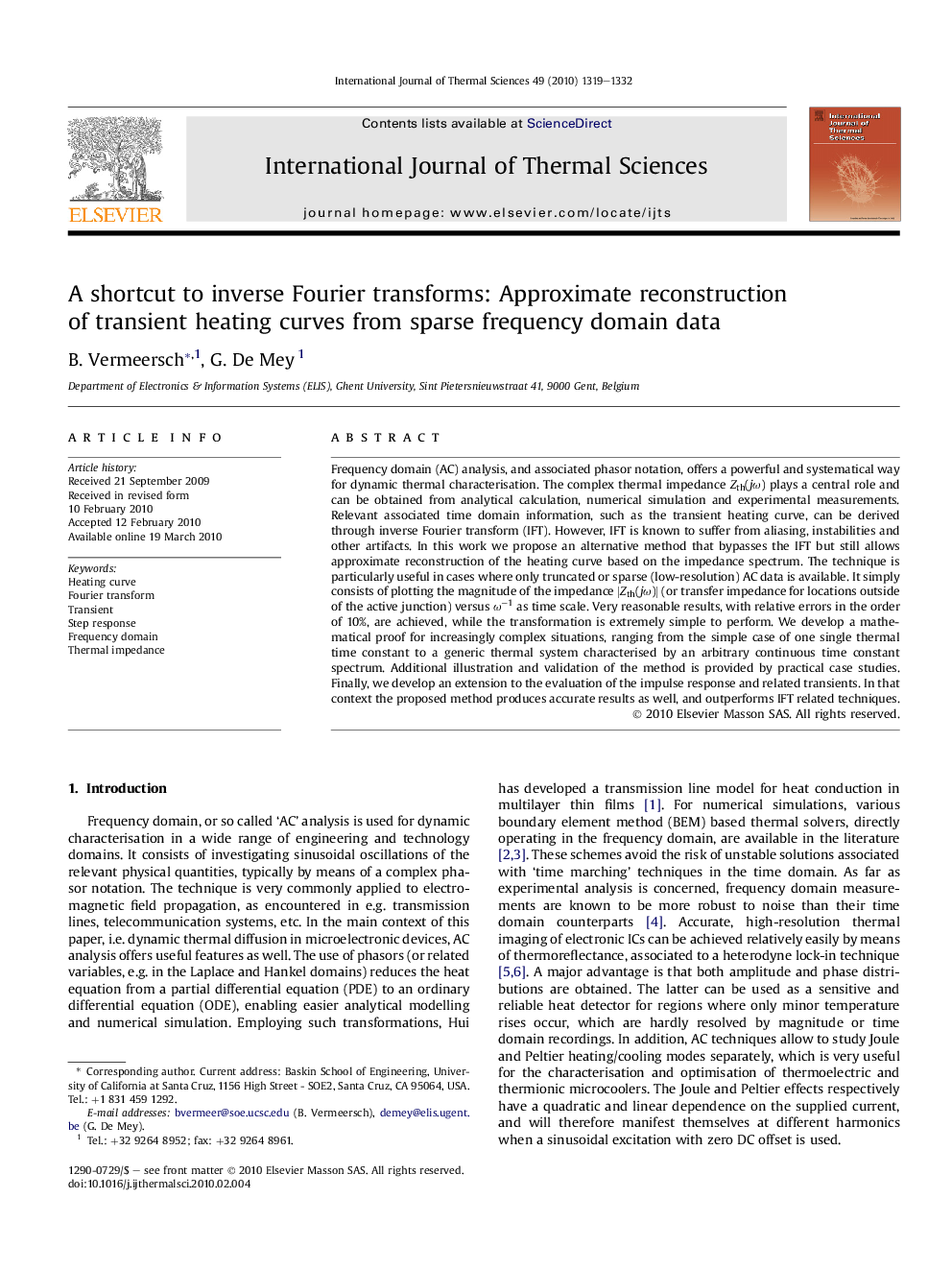| Article ID | Journal | Published Year | Pages | File Type |
|---|---|---|---|---|
| 670235 | International Journal of Thermal Sciences | 2010 | 14 Pages |
Abstract
Frequency domain (AC) analysis, and associated phasor notation, offers a powerful and systematical way for dynamic thermal characterisation. The complex thermal impedance Zth(jÏ) plays a central role and can be obtained from analytical calculation, numerical simulation and experimental measurements. Relevant associated time domain information, such as the transient heating curve, can be derived through inverse Fourier transform (IFT). However, IFT is known to suffer from aliasing, instabilities and other artifacts. In this work we propose an alternative method that bypasses the IFT but still allows approximate reconstruction of the heating curve based on the impedance spectrum. The technique is particularly useful in cases where only truncated or sparse (low-resolution) AC data is available. It simply consists of plotting the magnitude of the impedance |Zth(jÏ)| (or transfer impedance for locations outside of the active junction) versus Ïâ1 as time scale. Very reasonable results, with relative errors in the order of 10%, are achieved, while the transformation is extremely simple to perform. We develop a mathematical proof for increasingly complex situations, ranging from the simple case of one single thermal time constant to a generic thermal system characterised by an arbitrary continuous time constant spectrum. Additional illustration and validation of the method is provided by practical case studies. Finally, we develop an extension to the evaluation of the impulse response and related transients. In that context the proposed method produces accurate results as well, and outperforms IFT related techniques.
Related Topics
Physical Sciences and Engineering
Chemical Engineering
Fluid Flow and Transfer Processes
Authors
B. Vermeersch, G. De Mey,
